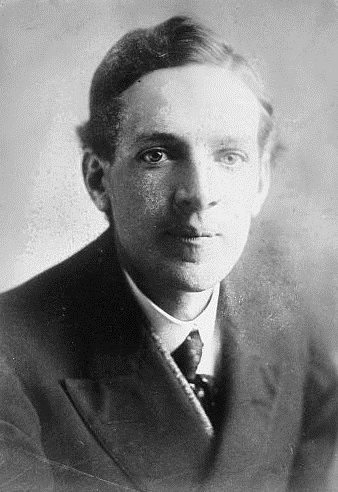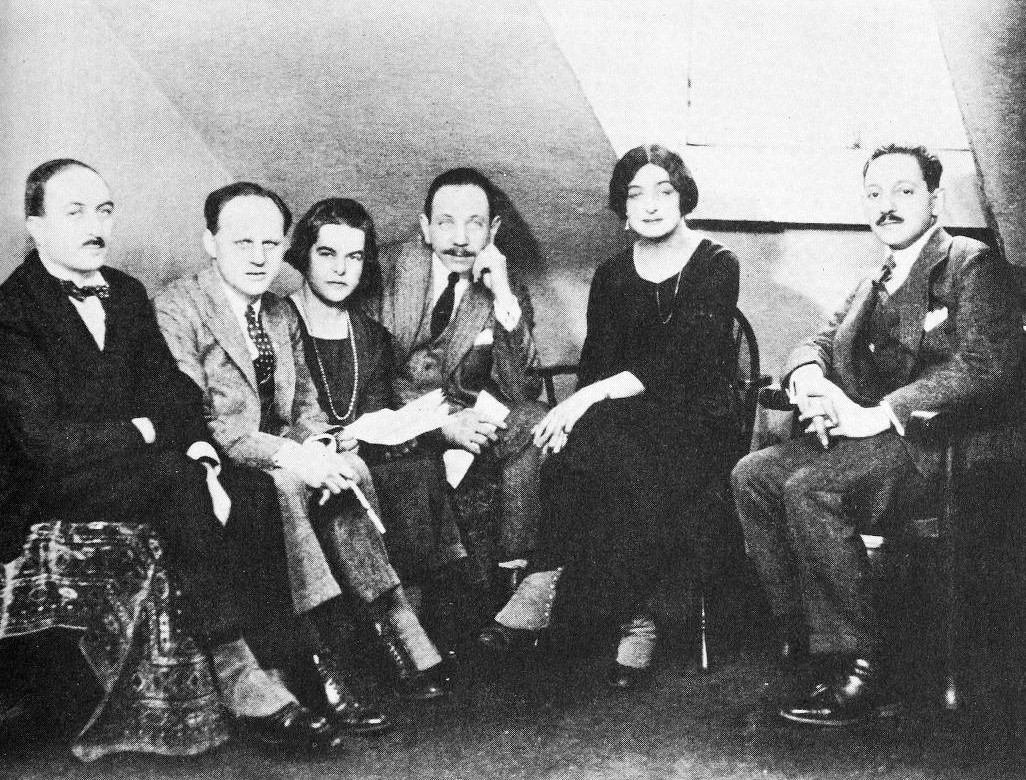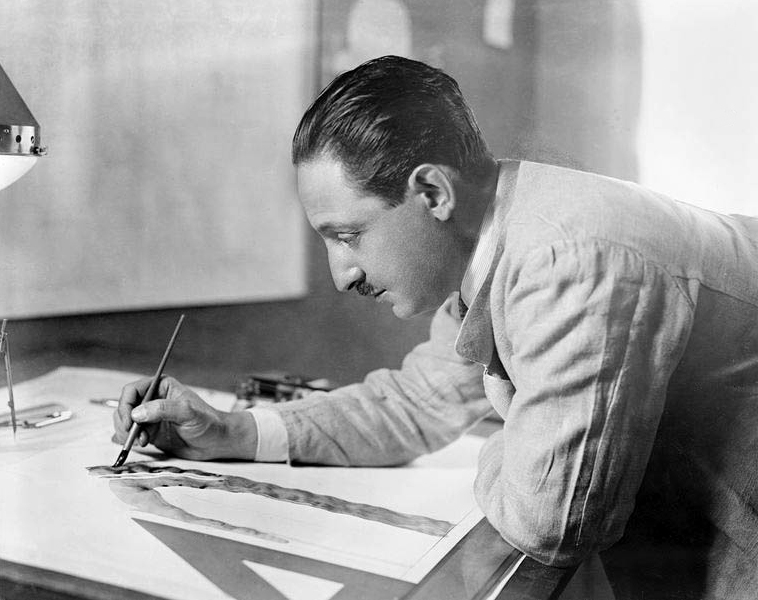|
Elmer Rice
Elmer Rice (born Elmer Leopold Reizenstein, September 28, 1892 – May 8, 1967) was an American playwright. He is best known for his plays ''The Adding Machine'' (1923) and his Pulitzer Prize-winning drama of New York tenement life, '' Street Scene'' (1929). Biography Early years Rice was born Elmer Leopold Reizenstein at 127 East 90th Street in New York City. His grandfather was a political activist in the Revolutions of 1848 in the German states. After the failure of that political upheaval, he emigrated to the United States where he became a businessman. He spent most of his retirement years living with the Rice family and developed a close relationship with his grandson Elmer, who became a politically motivated writer and shared his grandfather's liberal and pacifist politics. A staunch atheist, his grandfather may also have influenced Elmer in his feelings about religion as he refused to attend Hebrew school or to have a bar mitzvah. In contrast, Rice's relationship with his ... [...More Info...] [...Related Items...] OR: [Wikipedia] [Google] [Baidu] |
New York City, New York
New York, often called New York City or NYC, is the List of United States cities by population, most populous city in the United States. With a 2020 population of 8,804,190 distributed over , New York City is also the List of United States cities by population density, most densely populated major city in the United States, and is more than twice as populous as second-place Los Angeles. New York City lies at the southern tip of New York (state), New York State, and constitutes the geographical and demographic center of both the Northeast megalopolis and the New York metropolitan area, the largest metropolitan area in the world by urban area, urban landmass. With over 20.1 million people in its metropolitan statistical area and 23.5 million in its combined statistical area as of 2020, New York is one of the world's most populous Megacity, megacities, and over 58 million people live within of the city. New York City is a global city, global Culture of New ... [...More Info...] [...Related Items...] OR: [Wikipedia] [Google] [Baidu] |
Upton Sinclair
Upton Beall Sinclair Jr. (September 20, 1878 – November 25, 1968) was an American writer, muckraker, political activist and the 1934 Democratic Party nominee for governor of California who wrote nearly 100 books and other works in several genres. Sinclair's work was well known and popular in the first half of the 20th century, and he won the Pulitzer Prize for Fiction in 1943. In 1906, Sinclair acquired particular fame for his classic muck-raking novel, ''The Jungle'', which exposed labor and sanitary conditions in the U.S. meatpacking industry, causing a public uproar that contributed in part to the passage a few months later of the 1906 Pure Food and Drug Act and the Meat Inspection Act. In 1919, he published ''The Brass Check'', a muck-raking exposé of American journalism that publicized the issue of yellow journalism and the limitations of the "free press" in the United States. Four years after publication of ''The Brass Check'', the first code of ethics for journ ... [...More Info...] [...Related Items...] OR: [Wikipedia] [Google] [Baidu] |
Theatre Guild
The Theatre Guild is a theatrical society founded in New York City in 1918 by Lawrence Langner, Philip Moeller, Helen Westley and Theresa Helburn. Langner's wife, Armina Marshall, then served as a co-director. It evolved out of the work of the Washington Square Players. History Its original purpose was to produce non-commercial works by American and foreign playwrights. It differed from other theaters at the time in that its board of directors shared the responsibility of choosing plays, management, and production. The Theatre Guild contributed greatly to the success of Broadway from the 1920s throughout the 1970s. The Guild has produced a total of 228 plays on Broadway, including 18 by George Bernard Shaw and seven by Eugene O'Neill. Other major playwrights introduced to theatre-going Americans include Robert E. Sherwood, Maxwell Anderson, Sidney Howard, William Saroyan, and Philip Barry. In the field of musical theatre, the Guild has promoted works by Richard Rodgers, teame ... [...More Info...] [...Related Items...] OR: [Wikipedia] [Google] [Baidu] |
Lee Simonson
Lee Simonson (June 26, 1888, New York City – January 23, 1967, Yonkers) was an American architect painter, stage setting designer. He acted as a stage set designer for the Washington Square Players (1915–1917). When it became the Theatre Guild in 1919, he became a stage setting staff of the theater. Literary works *“Skyscrapers for Art Museums” ''The American Mercury'', August 1927, pages 399-404 *"Minor Prophecies" New York, Harcourt and Brace, 1927 *"The Stage Is Set", New York, Dover Publications, 1932 *(with Theodore Komisarjevsky): "Settings and Costumes of the Modern Stage" New York Studio Productions, 1933 *Isaacs, Edith J.R., editor: "Architecture for the New Theater" Lee Simonson: "Theater Planning" New York Theater Arts, 1935 * ''Part of a lifetime: Drawings and Designs 1919-1940'', Duell, Sloan and Pearce, New York 1943 * ''The Art of Scenic Design; A Pictorial Analysis of Stage Setting and its relation to Theatrical Production'', 1950 Exhibitions *"Mod ... [...More Info...] [...Related Items...] OR: [Wikipedia] [Google] [Baidu] |
Philip Moeller
Philip Moeller (26 August 1880 – 26 April 1958) was an American stage producer and director, playwright and screenwriter, born in New York where he helped found the short-lived Washington Square Players and then with Lawrence Langner and Helen Westley founded the Theatre Guild. He was educated at New York University and Columbia University. Directing career Among plays he directed for the Theatre Guild were: *''R.U.R.'' (1922) *''The Adding Machine'' (1923) *''The Guardsman'' (1924) *'' They Knew What They Wanted'' (1924) *''Ned McCobb's Daughter'' (1926) *''The Second Man'' (1927) *''Strange Interlude'' (1928) *''Meteor'' (1929) *''Dynamo'' (1929) *''Hotel Universe'' (1930) *''Elizabeth the Queen'' (1930) *''Mourning Becomes Electra'' (1931 - its first production) *''Biography'' by S. N. Behrman (1932) *''Ah, Wilderness!'' (1933) *''End of Summer'' (1936) Playwright *''The Battlefield'' (1913) presented May 14, 1913 at the Aerial Theatre, on the roof of the New Amsterdam ... [...More Info...] [...Related Items...] OR: [Wikipedia] [Google] [Baidu] |
Alexander Woollcott
Alexander Humphreys Woollcott (January 19, 1887 – January 23, 1943) was an American drama critic and commentator for ''The New Yorker'' magazine, a member of the Algonquin Round Table, an occasional actor and playwright, and a prominent radio personality. Woollcott was the inspiration for two fictional characters. The first was Sheridan Whiteside, the caustic but charming main character in the play ''The Man Who Came to Dinner'' (1939) by George S. Kaufman and Moss Hart,Oscar Levant, '' The Unimportance of Being Oscar'', Pocket Books 1969 (reprint of G.P. Putnam 1968), p. 81. . later made into a film in 1942. The second was the snobbish, vitriolic columnist Waldo Lydecker in the novel Laura, later made into a film in 1944. Woollcott was convinced he was the inspiration for his friend Rex Stout's brilliant, eccentric detective Nero Wolfe, an idea that Stout denied. Early life and education Alexander Humphreys Woollcott was the youngest of five children of William and Frances ... [...More Info...] [...Related Items...] OR: [Wikipedia] [Google] [Baidu] |
Dorothy Parker
Dorothy Parker (née Rothschild; August 22, 1893 – June 7, 1967) was an American poet, writer, critic, and satirist based in New York; she was known for her wit, wisecracks, and eye for 20th-century urban foibles. From a conflicted and unhappy childhood, Parker rose to acclaim, both for her literary works published in magazines, such as ''The New Yorker,'' and as a founding member of the Algonquin Round Table. Following the breakup of the circle, Parker traveled to Hollywood to pursue screenwriting. Her successes there, including two Academy Award nominations, were curtailed when her involvement in left-wing politics resulted in her being placed on the Hollywood blacklist. Dismissive of her own talents, she deplored her reputation as a "wisecracker." Nevertheless, both her literary output and reputation for sharp wit have endured. Some of her works have been set to music; adaptations included the operatic song cycle '' Hate Songs'' by composer Marcus Paus. Early life and ... [...More Info...] [...Related Items...] OR: [Wikipedia] [Google] [Baidu] |
Brooks Atkinson
Justin Brooks Atkinson (November 28, 1894 – January 14, 1984) was an American theatre critic. He worked for ''The New York Times'' from 1922 to 1960. In his obituary, the ''Times'' called him "the theater's most influential reviewer of his time." Atkinson became a ''Times'' theater critic in the 1920s and his reviews became very influential. He insisted on leaving the drama desk during World War II to report on the war; he received the Pulitzer Prize in 1947 for his work as the Moscow correspondent for the ''Times''. He returned to the theater beat in the late 1940s, until his retirement in 1960. Biography Atkinson was born in Melrose, Massachusetts to Jonathan H. Atkinson, a salesman statistician, and Garafelia Taylor. As a boy, he printed his own newspaper (using movable type), and planned a career in journalism. He attended Harvard University, where he began writing for the ''Boston Herald.''"Atkinson, (Justin) Brooks." The Scribner Encyclopedia of American Lives. Ed. ... [...More Info...] [...Related Items...] OR: [Wikipedia] [Google] [Baidu] |
Adding Machine
An adding machine is a class of mechanical calculator, usually specialized for bookkeeping calculations. In the United States, the earliest adding machines were usually built to read in dollars and cents. Adding machines were ubiquitous office equipment until they were phased out in favor of calculators in the 1970s and by personal computers beginning in about 1985. The older adding machines were rarely seen in American office settings by the year 2000. Blaise Pascal and Wilhelm Schickard were the two original inventors of the mechanical calculator in 1642. For Pascal, this was an adding machine that could perform additions and subtractions directly and multiplication and divisions by repetitions, while Schickard's machine, invented several decades earlier, was less functionally efficient but was supported by a mechanised form of multiplication tables. These two were followed by a series of inventors and inventions leading to those of Thomas de Colmar, who launched the ... [...More Info...] [...Related Items...] OR: [Wikipedia] [Google] [Baidu] |
Machine Age
The Machine Age is an era that includes the early-to-mid 20th century, sometimes also including the late 19th century. An approximate dating would be about 1880 to 1945. Considered to be at its peak in the time between the World War I, first and World War II, second world wars, the Machine Age overlaps with the late part of the Second Industrial Revolution (which ended around 1914 at the start of World War I) and continues beyond it until 1945 at the end of World War II. The 1940s saw the beginning of the Atomic Age, where modern physics saw new applications such as the Nuclear weapon, atomic bomb, the first computers, and the transistor. The Digital Revolution ended the intellectual model of the machine age founded in the mechanical and heralding a new more complex model of high technology. The digital era has been called the The Second Machine Age, Second Machine Age, with its increased focus on machines that do mental tasks. Universal chronology ImageSize = width:800 hei ... [...More Info...] [...Related Items...] OR: [Wikipedia] [Google] [Baidu] |
Expressionism (theatre)
Expressionism was a movement in drama and theatre that principally developed in Germany in the early decades of the 20th century. It was then popularized in the United States, Spain, China, the U.K., and all around the world. Similar to the broader movement of Expressionism in the arts, Expressionist theatre utilized theatrical elements and scenery with exaggeration and distortion to deliver strong feelings and ideas to audiences. History The early Expressionist theatrical and dramatic movement in Germany had Dionysian, Hellenistic philosophy, Hellenistic, and Nietzsche philosophy influences. It was impacted by the likes of German poet August Stramm and Swedish playwright August Strindberg. ''Murderer, the Hope of Women'' by Oskar Kokoschka, written in 1907 and first performed in Vienna in 1909, was the first fully expressionist drama. Expressionism was then explored and evolved in Germany by a multitude of playwrights, the most famous of which being Georg Kaiser, whose first succ ... [...More Info...] [...Related Items...] OR: [Wikipedia] [Google] [Baidu] |









.gif)